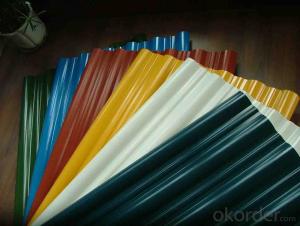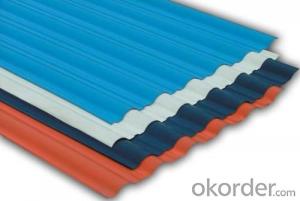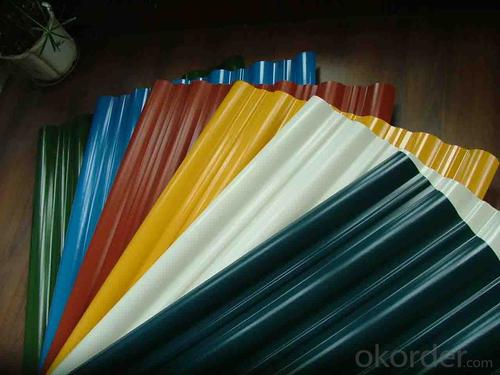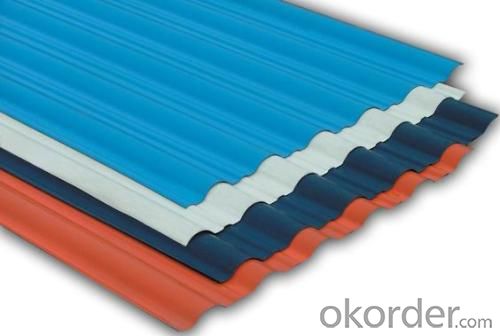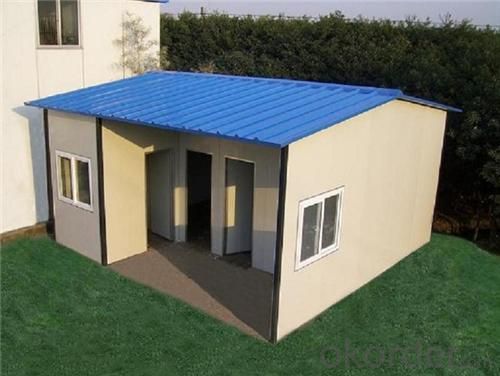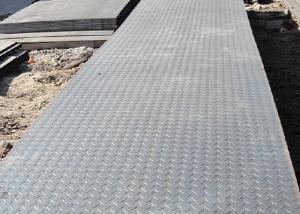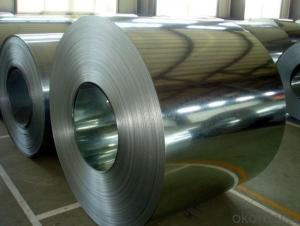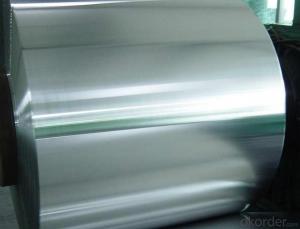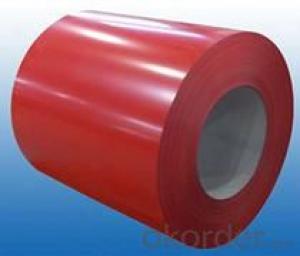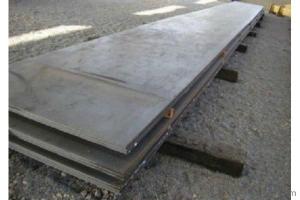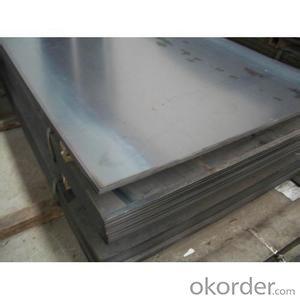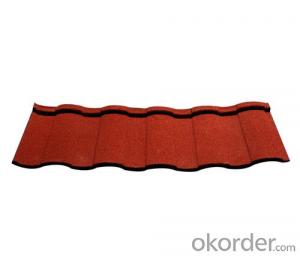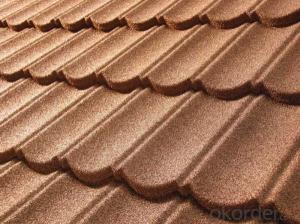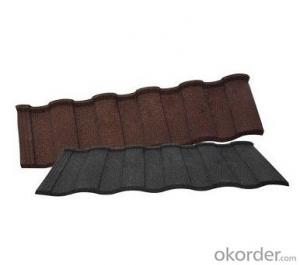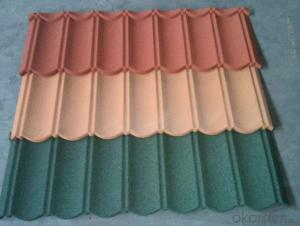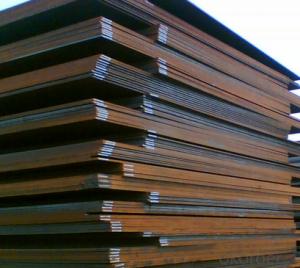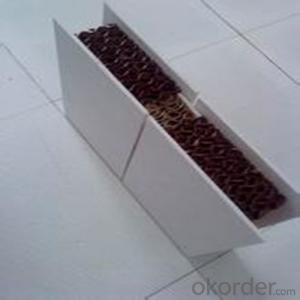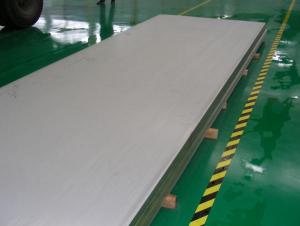Steel Sheet Roof Tile,Corrugated Steel Roof Plate,Color Steel Plate
- Loading Port:
- Nanjing
- Payment Terms:
- TT OR LC
- Min Order Qty:
- 2000 PCS
- Supply Capability:
- 30000 PCS/month
OKorder Service Pledge
OKorder Financial Service
You Might Also Like
Steel Sheet Roof Tile,Corrugated Steel Roof Plate,Color Steel Plate Details
Standard: | AISI,ASTM,BS,DIN,GB,JIS | Grade: | Corrugated Sheet Coil |
Place of Origin: | Hebei China (Mainland) | Thickness: | 0.13-1.2mm |
Technique: | Cold Rolled | Surface Treatment: | Galvanized |
Special Use: | Wear Resistant Steel | Width: | 310-1250mm |
Color: | Blue/Red/Green/Grey etc | Price: | Cheap Direct Factory Price |
Stock: | Big Quantity | Factory Visit: | Available |
Length: | 1000-6000mm,Coustomized | Name: | Hot Rolled Roofing Sheet |
Packaging & Delivery
Packaging Detail: | Waterproof paper, galvanized steel covered and steel strip packed for Hot Rolled Roofing Sheet |
Delivery Detail: | 10-15 days |
Steel Sheet Roof Tile,Corrugated Steel Roof Plate,Color Steel Plate Specifications
Steel Sheet Roof Tile,Corrugated Steel Roof Plate
Hot Rolled Metal Sheets
Usage: Walls, roofing
Excellent anti-corrosion
Item | Factory Hot Rolled Roofing Sheet |
Grade | SGCC SGCH HRB>85, SGLCC, DX51D+Z/AZ, |
Standard | ASTM A653M-04/JIS G3302/DIN EN10143/GBT 2518-2008 AS1397-2001, EN10215-1995, ASTM A792M-02, JIS G3321-1998 |
Basal plate | Cold rolled steel coil ,hot dipped galvanized/galvalume steel coil |
Zinc Coating | 60g/m2-175g/m2 |
Thickness | 0.13-1.0mm |
Width | 750-1250mm(before corrugation) 600-1000mm(after corrugation) |
Length | 1500-16000mm |
Number of corrugation | 7-12 |
Product feature | water resistance,light weight,easy installation,aesthetic,high tensile |
Packing | standard export water-proof package with steel strips fixed |
Delivery time | 10-25 days after confirmation |
Weight per Steel Pallet | 3 Metric Tons |
MOQ | 5 Metric Tons |
HS Code | 7210700000 |
Application | exterior and interior wall,roofs,sandwich plate and soffits |
Advantages | 1.Design according to customers 'requirements 2.Production under ISO9001-2008 Quality System 3.Easy to be installed as light weight 4.Z60-275/AZ30-150 is suitable for many application 5.Our products are recyclable materials 6.The less construction period, the more using time. |
Steel Sheet Roof Tile,Corrugated Steel Roof Plate,Color Steel Plate Pictures
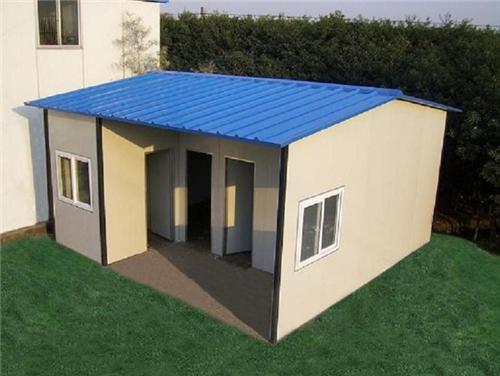
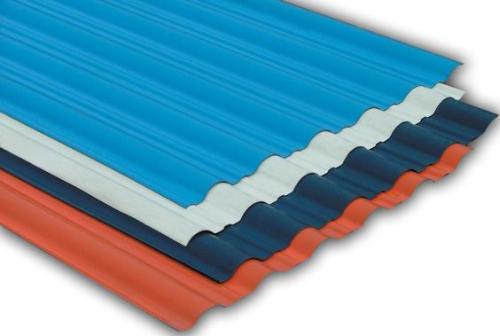
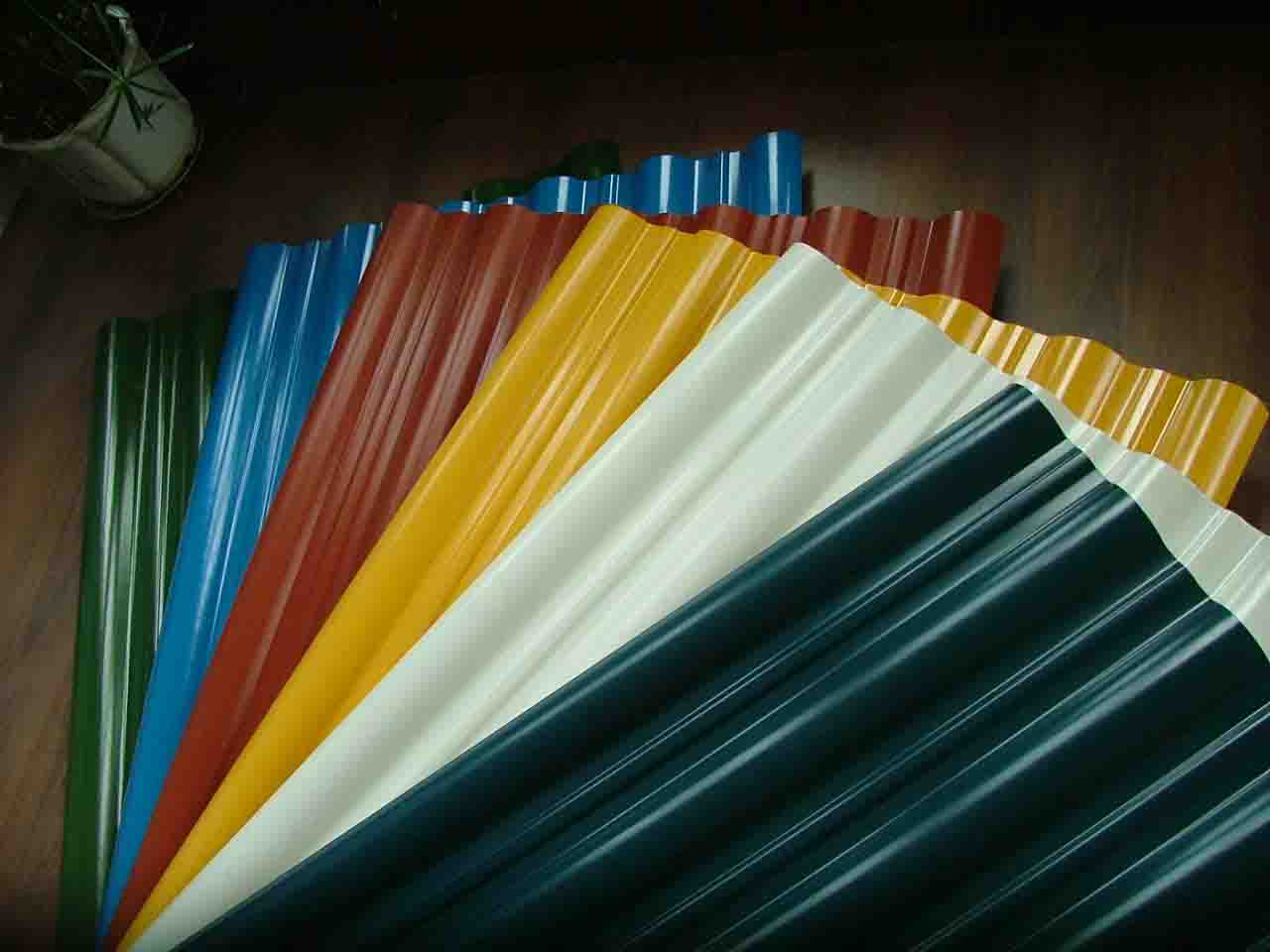
- Q: Can steel sheets be bent or shaped?
- Yes, steel sheets can be bent or shaped using various techniques such as rolling, pressing, or folding.
- Q: What are the different types of steel sheet coatings available?
- There are various types of steel sheet coatings available, including galvanized steel coatings, which are applied by dipping the steel in molten zinc; stainless steel coatings, which provide corrosion resistance and are commonly used in food processing and medical applications; tin coatings, often used in the production of tin cans; and aluminum coatings, which offer enhanced corrosion resistance and are commonly used in construction and automotive industries.
- Q: Can steel sheets be used for HVAC ductwork?
- Yes, steel sheets can be used for HVAC ductwork. Steel is a commonly used material for duct fabrication due to its durability, strength, and ability to withstand high temperatures. It is often preferred for commercial and industrial applications where a higher level of mechanical strength and fire resistance is required.
- Q: What is the process of etching or engraving on steel sheets?
- The process of etching or engraving on steel sheets involves several steps to create intricate designs or patterns on the surface of the metal. Here is a general overview of the process: 1. Design and Preparation: The first step is to create or choose a design that will be etched or engraved onto the steel sheet. This design can be hand-drawn or created using computer software. Once the design is finalized, it is transferred onto a film or stencil. 2. Cleaning the Steel Sheet: Before beginning the etching or engraving process, the steel sheet needs to be thoroughly cleaned to remove any dirt, grease, or oxidation. This is typically done using a solvent or a degreasing agent to ensure a clean and smooth surface for the etching or engraving. 3. Applying the Stencil: The stencil or film with the desired design is carefully applied to the steel sheet. This stencil acts as a protective barrier, preventing the etching or engraving solution from affecting the areas that should not be etched or engraved. 4. Etching or Engraving Solution: A specialized etching or engraving solution is selected based on the desired effect and the type of steel being worked on. This solution is applied to the exposed areas of the steel sheet, where the stencil has not been applied. The etching or engraving solution chemically reacts with the steel, removing a thin layer of metal to create the desired design or pattern. 5. Control and Timing: The etching or engraving process requires careful control of factors such as temperature, time, and concentration of the solution. These parameters can affect the depth and quality of the etching or engraving, so it is crucial to closely monitor and adjust them as needed. 6. Rinsing and Cleaning: Once the desired etching or engraving depth is achieved, the steel sheet is thoroughly rinsed to remove any remaining solution. This step is essential to stop the chemical reaction and prevent any further etching or engraving. 7. Finishing Touches: After rinsing, the steel sheet may undergo additional steps to enhance the appearance of the etched or engraved design. This can include polishing, buffing, or applying protective coatings to improve durability and visual appeal. Overall, the process of etching or engraving on steel sheets requires precision, attention to detail, and the use of specialized tools and chemicals. It is a skillful art form that can produce stunning and intricate designs on steel surfaces.
- Q: Can the steel sheets be used for insulation purposes?
- No, steel sheets are not typically used for insulation purposes as they conduct heat and cold rather than providing insulation.
- Q: The method of making spring steel for automobile?
- Steel plate like spring can not be used as a knife. No material, easy to the teeth. If the shape of the tool is not required, the spring coil of the shock absorber can be used.
- Q: Can steel sheets be bent or folded?
- Yes, steel sheets can be bent or folded. Steel is a highly versatile material that can be manipulated into various shapes and forms. In fact, the ability to bend or fold steel sheets is one of the reasons why it is widely used in construction, manufacturing, and other industries. Bending or folding steel sheets can be achieved through different methods such as press braking, roll bending, or using specialized tools like bending machines. The process involves applying force or pressure to the steel sheet, causing it to deform and take on the desired shape.
- Q: Can the steel sheets be easily welded?
- Steel sheets can indeed be welded with ease. Joining steel sheets together is commonly achieved through the process of welding. This procedure entails melting the edges of the steel sheets, followed by allowing them to cool and solidify, resulting in a sturdy connection. It is worth mentioning, however, that the ease of welding may vary depending on factors such as the type and thickness of the steel sheets, as well as the expertise and experience of the welder. Furthermore, it is crucial to adhere to appropriate safety measures and welding techniques to guarantee a successful and secure welding procedure.
- Q: How are steel sheets manufactured?
- Steel sheets are manufactured through a process called hot rolling, where a large steel slab is heated and passed through a series of rollers to reduce its thickness and achieve the desired dimensions. The hot rolling process involves reheating the slab, which is then fed into a roughing mill to reduce its thickness. It is then passed through a series of tandem mills to further reduce the thickness and achieve uniformity. The final product is coiled into large rolls or cut into smaller sheets, ready for various industrial applications.
- Q: How do steel sheets perform in extreme temperatures?
- Steel sheets generally perform well in extreme temperatures. Steel is known for its excellent heat resistance, allowing it to maintain its structural integrity and mechanical properties even when subjected to high or low temperatures. However, extreme temperatures can affect the strength and ductility of steel, causing it to become brittle at low temperatures and lose some of its load-bearing capacity at high temperatures. Therefore, the specific performance of steel sheets in extreme temperatures depends on factors such as the grade of steel used and the duration and intensity of the temperature exposure.
Send your message to us
Steel Sheet Roof Tile,Corrugated Steel Roof Plate,Color Steel Plate
- Loading Port:
- Nanjing
- Payment Terms:
- TT OR LC
- Min Order Qty:
- 2000 PCS
- Supply Capability:
- 30000 PCS/month
OKorder Service Pledge
OKorder Financial Service
Similar products
Hot products
Hot Searches
Related keywords
